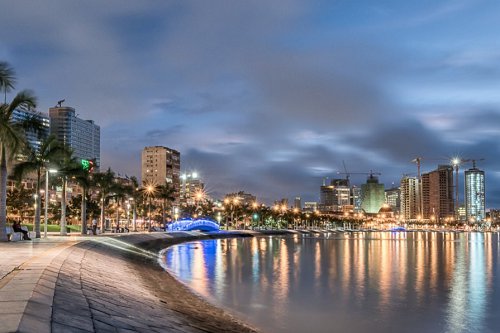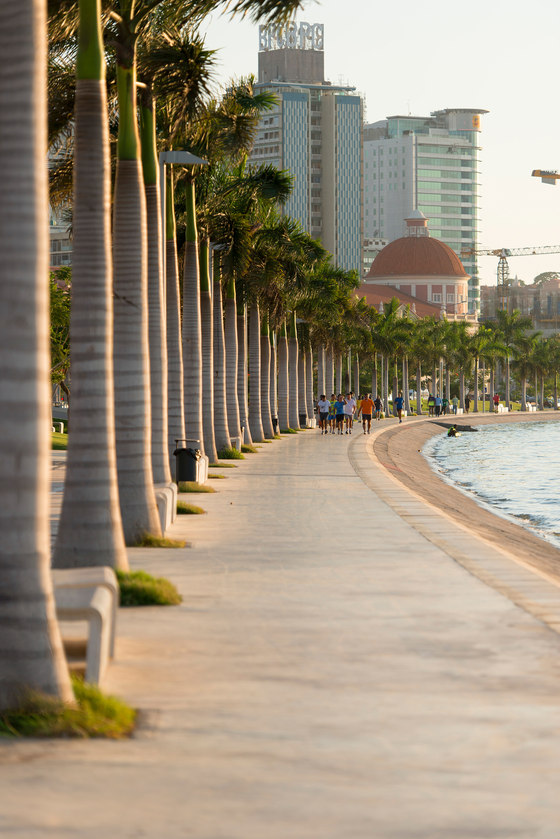Luanda province gives visitors a good taste of urban Angola, a mixture of Portuguese and African culture, but it can also be a great place to start your journey to discover the country’s many natural wonders. Angola has 1,600km of coastline, with beautiful deserted beaches, rainforests, savannahs, a desert in the south, plus a year-round extraordinary climate.
Luanda is one of the most important industrial and cultural urban centers in Africa and is home to over 8 million people. Portuguese is the official language.
The landmarks.
Luanda’s old town dates back to the 16th century when the Portuguese first arrived and built a settlement. They stayed for four centuries, and the influence is deeply felt.
You can travel back in time to colonial Luanda by visiting monuments such as the Iron Palace, believed to be designed by - or by someone close to - Gustave Eiffel, or the baroque Sé Cathedral, another of the city’s oldest constructions. The Fortress of São Miguel, built on the side of Mount São Paulo is the oldest in Angola and is also worth a visit.
After visiting the fortress head back to the old port by walking by the Marginal promenade (Avenida 4 de Fevereiro), a beautifully renovated seaside boulevard running along the Luanda bay. Throughout its three kilometers, the bay has a life of its own with plenty of green spaces, shops, lively bars, and restaurants.
Luanda's Food
Luanda’s gastronomic tradition is well established, promising to appeal to seafood lovers and culinary exotics. The city has a vibrant restaurant scene, drawing on both local and historic food influences (such as Mozambican, Portuguese, or Brazilian).
Angolans excel at cooking fish, so be sure not to miss a good grilled catch - Calulu fish is always a good option. Also try the Muamba chicken, and the Mufete, a generous national dish with fish, beans, plantain, and sweet potato. Dairy production is well-developed in the region, for something special opt for homemade goat cheese and yogurt. If you have a sweet tooth, try doce de ginguba, a peanut jam that is also great to buy as a souvenir, or the Cocada Amarela, a delicious coconut pudding.
Where to eat
A standout dining institution is La Vigia, in the Maculusso neighborhood. It has a large coal grill and their fish and steaks are displayed for you to choose your cut. Portions are big and the beer is always cold. Luandans love their beer and, because of the Portuguese influence, they love wine too. The Rooftop by ListenSound is a great place for a drink and to grab a bite while enjoying the views of the Luanda skyline. If you're up for sushi, K. Sushi in downtown Luanda or its sister Restaurant K in Talatona are splendid choices.
Cafe del mar is another great pick, and not only because of its private beach. The place has been at the forefront of the culinary scene for more than two decades. It is situated on Ilha de Luanda (Luanda’s island), which is always a fun place to be.
Beach
Along with the upscale beach scene in the “Ilha de Luanda” peninsula, there are many other beaches to explore near and around the city, a favorite is Mussulo Island. But countless other secluded and wild beaches await to be discovered on the coast. Just outside of Luanda, a short road trip will take you to Barra do Donde in the city’s north or Sangano to the South.
Now if what you’re looking for is a laid-back atmosphere, drive south to Cabo Ledo, the surfers' destination of choice. Only 100 km away from Luanda, Cabo Ledo hosts one of the longest left-hand waves in the world. If skydiving is on your bucket list, Cabo Ledo also offers the opportunity to test your resolve and jump out of an airplane.
Sportfishing is another great option around Luanda, Angola offers some of the best conditions in the world for marlin, sailfish, dourado and tuna.
How to get around?
Taxis are the best and safest way to get around in Luanda. You can also opt for candogueiros (mini bus cabs) for a more authentic experience, there are many and easy to spot thanks to their pale blue and white paint. Candogueiros are safe and convenient during the daytime and the same rule applies for walking: best when the sun is out! If you prefer a more exclusive ride, apps like Kubinga, T’Leva, and Heetch all offer an “Uber-Like” experience. There are also several car rental services, hiring a driver is also recommended if the budget allows. If you would like to explore a luxury train experience, be sure to research the Rovos Rail train journey between Dar Es Salaam, Tanzania, and Lobito, Benguela.
GALLERY






